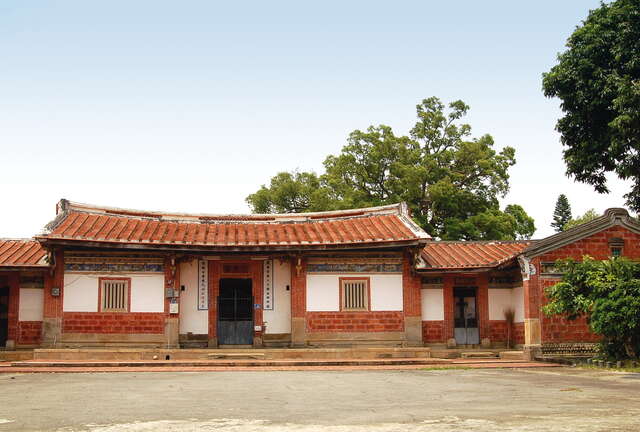Shekou Lin Family Mansion and Garden Introduction
During the Kangxi period of the Qing Dynasty, the ancestors of the Lin family settled in Anli Community (now Shenkang District) in Taiwan. During the Tongzhi period, Lin Zhenfang played a significant role in suppressing the Dai Chaochun Incident, for which the Qing court awarded him the title of "Zhongshu Ke" and a plaque. The Shekou Lin Residence was built at the height of Lin Zhenfang's success; it was originally a purchased and renovated old residence of Wu Zhang. The initial structure was largely completed in the first year of the Guangxu period (1875), while the additional Hulong wing was gradually completed over the years as the family population increased. The Shekou Lin Residence features a one-story gatehouse with a width of three openings, presenting a simple appearance. Upon entering the gatehouse and passing through a long corridor, one arrives at the first entry hall, whose entrance is designed in a simple concave "shou" style. The main hall of the second entry also has a concave "shou" shape, with a corridor in front providing a spacious semi-outdoor living space. The courtyard in front of the main hall is paved with tiles arranged in a variety of patterns, with the herringbone pattern being the primary design, symbolizing "prosperous offspring and everlasting lineage." The stone carvings of the Lin residence are exceptionally exquisite and quite rare among residential buildings from the Qing Dynasty. Both the entrance hall and the main hall feature ornate carvings on the "diu" (the feet of tables), with a central plaque in the entrance hall inscribed with "Dafu Di" and colorful, delicately crafted "Jiaozi" ceramics adorning the walls. Dividing the courtyard from the side yard are two high walls primarily made of tiled bricks, mostly red, with a pebble foundation and gun holes for firearms. In the main hall, there is a plaque in the shape of a scroll, but the text within has been lost over time. The walls feature elaborately designed hexagonal wooden flower windows, with triangular "ta jiao" carvings at the corners depicting four bats, which represent "blessings." The beam supports are humorously adorned with the phrase "Han fan kang da liang." The altar table and spirit shrine inside the main hall are from the same period, sharing similar carving styles and themes, while the grand chairs in the hall have been lost. The main hall's framework is built using the dou-gong system and does not employ cylindrical beams, while the paintings and calligraphy on the left and right walls are of high elegance, with inscriptions from the first year of Guangxu, providing important evidence regarding the dating of the residence's structure. The "dou bao" on the beams of the left and right wing also features crabs, symbolizing the "second class in the imperial examination," indicating success in obtaining academic achievements. The decorative paintings of the Shekou Lin Residence are also quite exquisite, identifiable by their style as works of renowned painters such as Kuo Youmei and Kuo Tingke from Lugang. These mural designs are primarily found in late Qing residential homes and temples in central Taiwan, with few remaining today, marking an important chapter in Taiwanese art history that is extremely valuable.





















